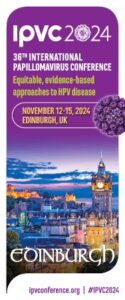A review published today in AACC’s The Journal of Applied Laboratory Medicine gives an expert overview of NIPS’s many nuances, to arm healthcare providers with the information they need to ensure patients benefit from this revolutionary but complex technology.
Using a simple blood sample, NIPS detects common genetic disorders like Down syndrome in utero without the risk of miscarriage that accompanies standard, invasive prenatal tests such as amniocentesis. When NIPS was first introduced, it was recommended for pregnancies at high risk for these chromosomal abnormalities. Then, as more studies demonstrated NIPS’s efficacy in even low risk women, the American College of Obstetricians and Gynecologists issued updated guidelines in 2016 recommending that healthcare providers offer NIPS to all expectant mothers. Despite the success of NIPS, however, this technology still has limitations that could lead to serious consequences—such as patients terminating healthy pregnancies—if clinicians do not know about these shortcomings or fail to educate patients about them.
In this review, a team of clinical laboratory experts led by Christina M. Lockwood, PhD, of the University of Washington in Seattle discuss the challenges of NIPS that clinicians must address in order to successfully expand the use of this method to all pregnancies. One of the most significant issues is that NIPS is only a screening test. This means that, while a negative result can rule out the need for further testing, a positive result should not be acted on until confirmed with invasive testing. Lockwood’s group recommends that all patients undergoing NIPS receive pre-test and post-test counseling to ensure they understand this, as well as to help with overall interpretation of complicated NIPS results. Another issue is that some labs now offer NIPS for less common genetic disorders in addition to major chromosomal abnormalities. Lockwood cautions healthcare providers against using NIPS for these additional conditions, due to the current lack of evidence supporting the efficacy of NIPS for rare disorders.
Furthermore, the review stresses that there are numerous biological scenarios in which NIPS has a higher rate of failure, such as when the pregnancy involves more than one fetus or when the mother is obese. Healthcare providers should be sure to take these variables into account when choosing the most effective prenatal test for a patient.
“While these new tests offer exciting new opportunities that can empower families with increased knowledge about their reproductive risk, caution is warranted,” said Lockwood. “Particularly in the setting of prenatal screening, testing must be introduced in an evidence-based and ethically responsible manner with follow-up monitoring after its implementation. A continued discussion at the national level by professional societies that includes input from healthcare providers and patients is critical for successful implementation of [NIPS] screening.”
Source: AACC



















































